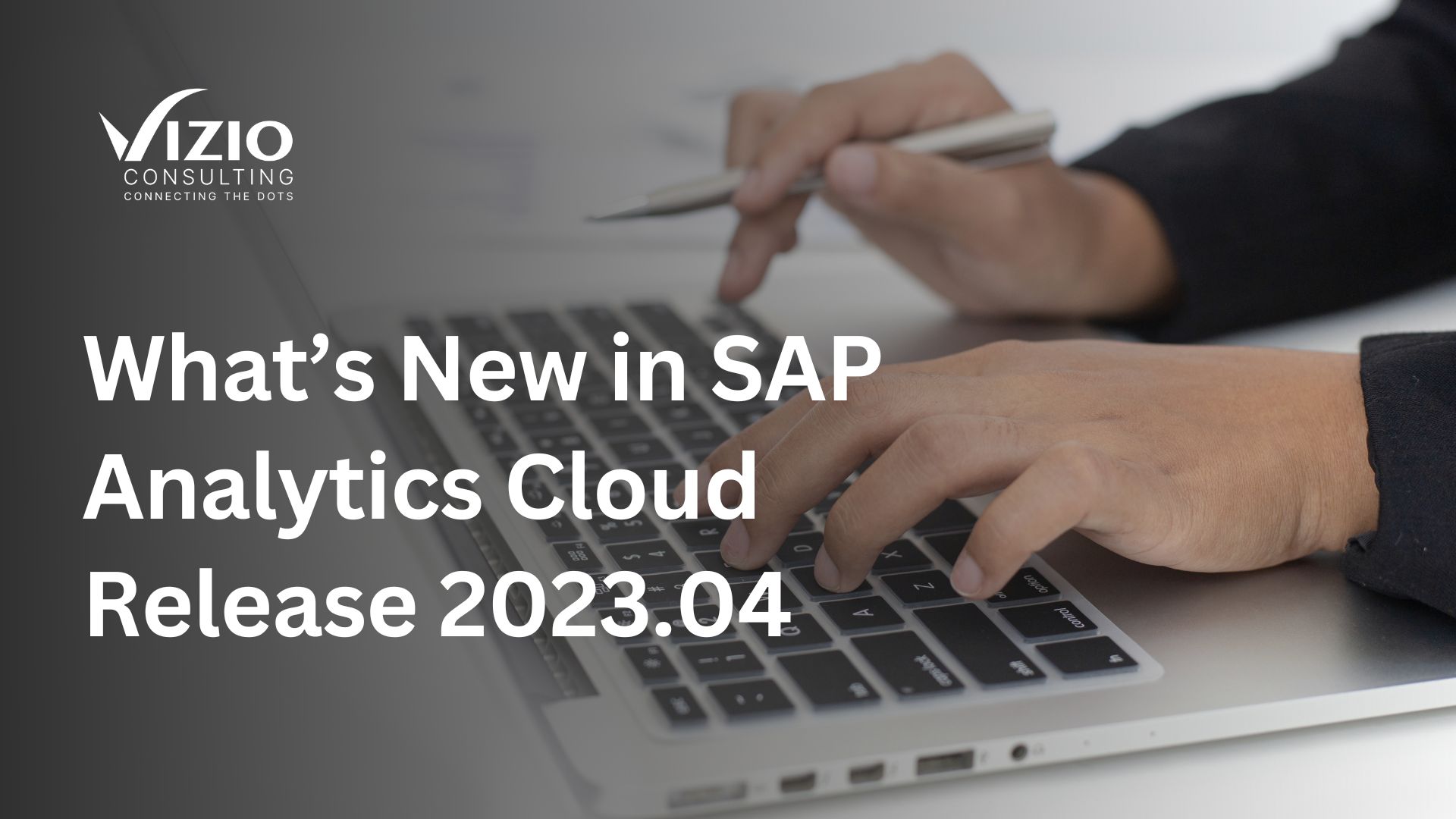SAP Analytics Cloud FastTrack customers can now use the SAP Analytics Cloud 2023.04 release with these features. It will be available as part of the QRC Q2 2023 release for customers with SAP Analytics Cloud Quarterly Release Cycle (QRC).
SAP Analytic Cloud unifies analytics and planning with a unique integration to SAP applications and seamless access to heterogeneous data sources.
With trusted insights and integrated plans, everyone in an organization can make decisions without uncertainty.
What Are The New Highlights That Await Us?
1) Display the Base Label and the Integration Variance Label
Story Designers can now toggle between displaying Net Totals and showing/hiding Totals, which offers more information about aggregations for layered visualizations:
The total can be displayed or hidden for stacked bar/column charts, combination bar/column charts, and marimekko charts.
2) Business Planning
Enhancement for Multiple Actions to Support Any Public API (Field Mapping)
Users can now specify the field mapping when seeking a return status in the multi actions API phase. This enables the user to modify the answer body’s preset fields.
Thanks to the multi actions API step that allows customized field mapping, users no longer have to change their current API answer or provide a new API because the fields don’t match. Now that they can immediately map the fields in the API step, it is easier and more durable for API steps.
3) Microsoft Office Integration
Handle Overlapping Content and Allow Several Models per Sheet
If other Excel content is at risk of being overwritten, users will now be notified with a warning message. This provides more flexibility in letting users continue with the overwrite or can crop the table until the other content (Excel or add-in content). Additionally, including multiple tables on a single sheet is now possible.
This feature is available to customers as of February 8th, 2023.
4) Calculations and formatting on the front end
Users can add new rows and columns and make a user-defined dynamic computation using Excel algorithms. These algorithms cannot be specified per cell, only for a full column or row. Although it can be overwritten, formatting is derived from the cell’s first mention.
Customers can use this function starting on February 8th, 2023.
5) Cellular Analytics
Support for the SAP Analytics Cloud Android App’s Catalog of Features
The SAP Analytics Cloud mobile Android software now supports the Catalog, bringing it feature equivalence with iOS. The Catalog is a singular entry point to all user-published content in SAP Analytics Cloud. On the main page, a Catalog option will be introduced to view a catalogue product collection. Users can browse the catalog, use catalog criteria, and get catalog information.
New Developments in the Planning Field
Formula FOREACH Extension
Dimension characteristics can now be used in FOREACH in extended formulas.
With the new keyword ASC or DESC, you can use the FOREACH loop to repeat instructions with dimensions or dimension attributes in either increasing or decreasing sequence.
Ranking Feature
You can now define the ordering order of your schematics based on various dimensions, including the ranking of each dimension independently and all dimensions collectively.
The optimized narrative experience is the only one that offers this feature.
Sorting Filters
Now, sorting the various filter components within the narrative is simple. (e.g. by drag and drop).The optimized narrative experience is the only one that offers this feature.
New Value Driver Tree
Creating new heritage value driver trees in a different builder is no longer possible.
Although it can and should be changed into the new value driver tree, a current legacy value driver tree can still be modified and used.
Additional Details
Here is a short rundown of additional highlights:
- Comprehensive updates to the Microsoft Office add-in SAP Analytics Cloud
- PDF export of user-defined components
- Additional modifications and feature additions in the planning area’s schedule
- after signing out, saving search terms and criteria in catalogs.
- Increasing the import interface’s size
Additionally, there is still a ton of unrealized promise in the fields of content administration, modeling, calendars, mobile, and much more.
Conclusion
An increasing number of new functions can only be used in optimum mode. As a result, you should consider using this novel strategy when developing tales.
As was suggested at the outset, both new and experienced SAC users enjoyed this year’s DSAG annual meeting. To close out this blog and satiate your hunger for the following part, here is a brief taste from the upcoming SAC developments stream.
- SAC and BW/4HANA, HANA, BPC, SAP S/4HANA, and HANA Cloud interface has been improved.
- Story, application, and digital office consolidation.
- Added and enhanced organizing capabilities.
- Comprehensive planning features in the Office Excel add-in for SAP Analytics Cloud.

